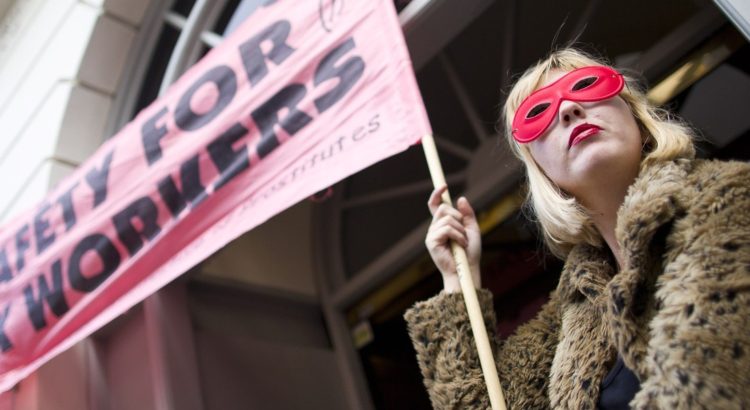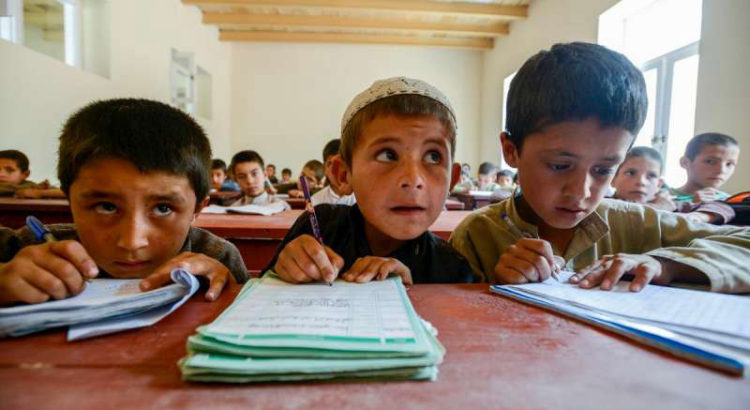Noruega/26 mayo 2016/Autor: Amnistía Internacional
“Si un cliente se porta mal contigo, al final tienes que solucionarlo tú misma. Sólo llamas a la policía en caso de peligro de muerte. Si llamas a la policía, lo pierdes todo.»
–Trabajadora sexual de Noruega
Amnistía Internacional publica hoy su política sobre la protección de las trabajadoras y los trabajadores sexuales frente a los abusos y las violaciones de derechos humanos, junto con cuatro informes de investigación sobre este asunto en Papúa Nueva Guinea, Hong Kong, Noruega y Argentina.
“Las personas dedicadas al trabajo sexual están especialmente expuestas a sufrir toda una serie de abusos contra los derechos humanos, como violación, violencia, extorsión y discriminación. Con demasiada frecuencia la protección de la ley y los medios de resarcimiento con que cuentan son escasos o inexistentes», ha explicado Tawanda Mutasah, director general del Programa de Derecho Internacional y Política de Amnistía Internacional.
“Nuestra política indica que los gobiernos deben tomar aún más medidas para proteger de los abusos y violaciones de derechos humanos a quienes se dedican al trabajo sexual. Nuestra investigación pone de relieve los testimonios de estas personas y los problemas a que se enfrentan a diario.»
La política
La política de Amnistía Internacional es la culminación de extensas consultas de ámbito mundial, un minucioso examen de datos sustanciales y normas internacionales de derechos humanos e investigación directa, llevados a cabo a lo largo de más de dos años.
Su aprobación formal y su publicación son el resultado de una decisión democrática, tomada por el movimiento global de Amnistía Internacional en agosto de 2015 (disponible aquí) y de la que se informó ampliamente entonces.
En la política se formulan varios llamamientos a los gobiernos para que, entre otras cosas, garanticen la protección contra el daño, la explotación y la coerción; la participación de las trabajadoras y los trabajadores sexuales en la elaboración de las leyes que afectan a su vida y a su seguridad, el fin de la discriminación, así como el acceso a la educación y a oportunidades de empleo para todas las personas.
Se recomienda la despenalización del trabajo sexual consentido, incluida la anulación de las disposiciones legales que prohíben las actividades conexas, como la prohibición de la compra y el ofrecimiento de servicios sexuales y de la organización general de trabajo sexual Esta recomendación está basada en la evidencia de que tales disposiciones hacen a menudo que las personas dedicadas al trabajo sexual estén menos seguras y que se abuse de ellas con impunidad, pues es frecuente que tengan demasiado miedo a que las sancionen para presentar una denuncia ante la policía. Las leyes sobre el trabajo sexual deben estar centradas en la protección contra la explotación y los abusos, no en intentar prohibirlo por completo y sancionar a quienes se dedican a él.
La política de Amnistía Internacional refuerza su postura de que el trabajo forzoso, la explotación sexual infantil y la trata de seres humanos son abusos atroces contra los derechos humanos, que hacen necesaria una acción concertada y que, con arreglo al derecho internacional, han de estar penalizados en todos los países.
“Queremos que se modifiquen las leyes para centrarlas en conseguir que la vida de las personas que se dedican al trabajo sexual sea más segura y que mejore su relación con la policía, a la vez que se aborda el problema absolutamente real de la explotación. Queremos que los gobiernos se aseguren de que ninguna persona es coaccionada para vender servicios sexuales o no puede dejar el trabajo sexual si decide hacerlo», ha añadido Tawanda Mutasah.
Queremos que se modifiquen las leyes para centrarlas en conseguir que la vida de las personas que se dedican al trabajo sexual sea más segura y que mejore su relación con la policía, a la vez que se aborda el problema absolutamente real de la explotación. Queremos que los gobiernos se aseguren de que ninguna persona es coaccionada para vender servicios sexuales o no puede dejar el trabajo sexual si decide hacerlo.
La investigación
Un extenso trabajo de investigación, incluidos cuatro informes específicos desde el punto de vista geográfico que se han publicado hoy junto con la política de Amnistía Internacional, muestra que las trabajadoras y los trabajadores sexuales sufren a menudo terribles abusos contra los derechos humanos. Es así debido en parte a la criminalización, que agrava su situación de peligro y marginación y les impide buscar protección contra la violencia y solicitar servicios jurídicos y sociales.
“Algunas trabajadoras sexuales nos contaron que la criminalización permite a la policía acosarlas y no dar prioridad a sus denuncias y a su seguridad», ha explicado Tawanda Mutasah.
En vez de centrarse en proteger a las trabajadoras y los trabajadores sexuales de la violencia y el crimen, las autoridades encargadas de hacer cumplir la ley de muchos países se centran en prohibir el trabajo sexual por medio de la vigilancia, el acoso y las redadas.
La investigación de Amnistía Internacional revela que las personas que realizan trabajo sexual suelen tener muy poca o ninguna protección frente a los abusos y carecer de resarcimiento por medios judiciales incluso en los países donde la venta de servicios sexuales es legal.
Papúa Nueva Guinea
En Papúa Nueva Guinea es ilegal vivir del trabajo sexual y organizar actividades de comercio sexual. La homosexualidad también está penalizada y es la principal causa de procesamiento de trabajadores sexuales.
La investigación de Amnistía Internacional ha determinado que esta legislación penal permite a la policía amenazar, extorsionar y detener arbitrariamente a las personas dedicadas al trabajo sexual.
Las trabajadoras y los trabajadores sexuales de Papúa Nueva Guinea sufren en grado extremo estigmatización, discriminación y violencia, incluidos la violación y el asesinato. Según una encuesta de investigación académica de 2010, en un periodo de seis meses el 50% de las personas dedicadas al trabajo sexual en la capital del país, Port Moresby, habían sido violadas por clientes o por la policía.
Amnistía Internacional escuchó testimonios terribles de personas que habían sido sometidas a violación y abusos sexuales por agentes de policía, clientes y otros agresores, pero tenían demasiado miedo para denunciarlo porque incluso ellas mismas se consideraban «ilegales».
Mona, trabajadora sexual sin hogar, contó a Amnistía Internacional: “La policía comenzó a golpear a mi amigo [un cliente] y a mí […] Seis agentes tuvieron sexo conmigo uno tras otro. Estaban armados, así que tuve que hacerlo. No tengo ningún apoyo para denunciarlos ante los tribunales. Fue muy doloroso, pero lo he dejado estar. Si recurro a la ley, no podrán ayudarme, porque el trabajo sexual es ilegal en Papúa Nueva Guinea.»
La policía de Papúa Nueva Guinea ha utilizado preservativos como prueba contra personas dedicadas al trabajo sexual, a quienes a menudo se estigmatiza y se acusa de ser «propagadoras» de enfermedades. Esta práctica hace que muchas se abstengan de buscar información y servicios de salud sexual y reproductiva, incluso para el VIH/sida.
Mary, trabajadora sexual, explicó: “Cuando nos agarra o nos retiene la policía, si nos encuentran condones nos golpean y dicen que promovemos el sexo o que somos las que propagamos enfermedades de esas como el VIH. La policía pide dinero; nos amenaza o nos dice que le demos tanto. Nosotras se lo damos, porque tenemos miedo de que nos golpeen si no.”
Hong Kong
En Hong Kong, vender servicios sexuales no es ilegal si se trata de una persona que lo hace en un domicilio particular. Sin embargo, trabajar en lugares aislados deja a las trabajadoras y los trabajadores sexuales en situación vulnerable, expuestos a sufrir robos, agresiones físicas y violaciones.
En su calidad de trabajadora sexual, Queen contó a Amnistía Internacional: “No he denunciado nunca ningún delito, como violación, porque temo que me acusen de ofrecer servicios sexuales.”
No he denunciado nunca ningún delito, como violación, porque temo que me acusen de ofrecer servicios sexuales.
Las personas dedicadas al trabajo sexual en Hong Kong no sólo reciben poca protección de la policía, sino que a veces son sometidas deliberadamente a acoso por ella.
La investigación de Amnistía Internacional revela que los agentes de policía ejercen a menudo sus atribuciones de manera indebida para atrapar y sancionar a estas personas tendiéndoles trampas, extorsionándolas y coaccionándolas. Se permite que agentes de policía de incógnito reciban en el curso de su trabajo determinados servicios sexuales de personas dedicadas al trabajo sexual para conseguir pruebas. Amnistía Internacional ha registrado también casos de policías o individuos que afirmaban serlo que dijeron a trabajadoras o trabajadores sexuales que podían librarse de sanciones legales si les daban dinero o sexo «gratis».
Las personas trans dedicadas al trabajo sexual suelen ser objeto de prácticas policiales especialmente abusivas, como humillantes e invasivos cacheos integrales, practicados por agentes varones a mujeres trans.
“Hay mucho manoseo y mucha mofa”, explicó un abogado que defiende a personas trans dedicadas al trabajo sexual en Hong Kong.
Tras su detención, las trabajadoras sexuales trans pueden ser enviadas a centros de detención para hombres y a unidades especiales para personas con enfermedades mentales.
Noruega
En Noruega, comprar servicios sexuales es ilegal, pero el acto directo de venderlos, no. Otras actividades relacionadas con el sexo están penalizadas, entre ellas la «promoción de la prostitución» y alquilar establecimientos para vender servicios sexuales.
A pesar del alto índice de violaciones y violencia de clientes y bandas organizadas, el grado de resistencia de las personas dedicadas al trabajo sexual a denunciar la violencia ante la policía es muy alto.
“Fui a casa de un hombre. Me dio dos puñetazos en la cara. No lo denuncié a la policía. No quiero que figure en mi historial”, dijo a Amnistía Internacional una persona dedicada al trabajo sexual.
Fui a casa de un hombre. Me dio dos puñetazos en la cara. No lo denuncié a la policía. No quiero que figure en mi historial.
Amnistía Internacional escuchó el testimonio de varias personas dedicadas al trabajo sexual en Noruega que habían denunciado violencia a la policía y habían sido desalojadas de sus hogares o expulsadas por haber hablado con la policía.
En virtud de la legislación noruega, las trabajadoras y los trabajadores sexuales corren riesgo de desalojo forzoso, pues sus caseros pueden ser procesados por alquilarles la casa si venden servicios sexuales en ella.
Una persona que representaba a una organización noruega de defensa de los derechos de las trabajadoras y los trabajadores sexuales explicó: «Si los caseros no proceden al desalojo, la policía interpone una querella criminal contra ellos […] La policía anima a los caseros a tomarse la justicia por su mano y aplicarla ellos mismos.”
Las personas dedicadas al trabajo sexual no pueden tampoco agruparse para trabajar por motivos de seguridad ni contratar servicios de terceros en funciones de seguridad, pues probablemente se calificaría de «promoción de la prostitución» según la ley.
Buenos Aires, Argentina
En teoría, la venta o compra de servicios sexuales no es ilegal en Buenos Aires, pero en la práctica a las personas dedicadas al trabajo sexual se las criminaliza por medio de diversas leyes que sancionan actividades conexas y que no distinguen entre trabajo sexual con consentimiento y trata de seres humanos.
En la investigación de Amnistía Internacional se determinó que entre las personas dedicadas al trabajo sexual en Buenos Aires el grado de resistencia a denunciar violencia a la policía era muy alto.
“[El cliente] me pagó y estaba a punto de bajarme del auto cuando me agarró del cuello y me cortó con un cuchillo. Le di todo el dinero que tenía y mi teléfono celular, y me dejó ir,” dijo a Amnistía Internacional Laura, trabajadora sexual que se desempeña en la calle.
Explicó que no había denunciado la violencia ni el robo a la policía porque le parecía que iba a ser una pérdida de tiempo: “No me van a escuchar, porque soy trabajadora de la calle.”
La policía suele abordar arbitrariamente en la calle a las personas que se dedican al trabajo sexual, que en ocasiones tienen que pagar reiteradas multas y son sometidas a libertad vigilada. Es ilegal que la policía o los fiscales de Buenos Aires tengan en cuenta la apariencia, la vestimenta o los modales de una persona al hacer cumplir una ley que penaliza la comunicación relacionada con el trabajo sexual en público. Sin embargo, la aplicación de estos criterios es un hecho, y en sus operaciones la policía se dirige específicamente contra las personas trans que se dedican al trabajo sexual.
En Buenos Aires, aunque desarrollen su actividad en domicilios particulares, las trabajadoras y los trabajadores sexuales suelen sufrir largas y violentas inspecciones y allanamientos de la policía, así como extorsiones y chantajes.
Las personas que se dedican al trabajo sexual en Buenos Aires informaron también de problemas para acceder a los servicios de salud, entre ellos una enorme estigmatización y discriminación.
Realmente no teníamos acceso a los servicios de atención a la salud, porque siempre que íbamos a un hospital los médicos se burlaban o nos atendían en último lugar.
«Realmente no teníamos acceso a los servicios de atención a la salud, porque siempre que íbamos a un hospital los médicos se burlaban o nos atendían en último lugar», dijo a Amnistía Internacional una persona trans que se había dedicado al trabajo sexual.
Amnistía Internacional comprobó que estos obstáculos habían hecho que algunas personas que realizaban trabajo sexual prescindieran por completo de estos servicios.
Nada justifica los abusos
“En demasiadas partes del mundo, las trabajadoras y los trabajadores sexuales carecen de protección de la ley y sufren espantosos abusos contra los derechos humanos. Esta situación no puede justificarse jamás. Los gobiernos deben tomar medidas para proteger los derechos humanos de todas las personas, incluidas las que se dedican al trabajo sexual. La despenalización es sólo una de las medidas necesarias que los gobiernos pueden tomar para garantizar la protección frente al daño, la explotación y la coerción», ha manifestado Tawanda Mutasah.
Fuente:



 ¿Vivimos en un país donde la violencia se ha vuelto una costumbre? Si. ¿La escuela y los maestros pueden hacer mucho al respecto? Desde luego. Sin embargo el trabajo es de todos, sin miramientos ni falsas promesas.
¿Vivimos en un país donde la violencia se ha vuelto una costumbre? Si. ¿La escuela y los maestros pueden hacer mucho al respecto? Desde luego. Sin embargo el trabajo es de todos, sin miramientos ni falsas promesas.









 Users Today : 10
Users Today : 10 Total Users : 35460313
Total Users : 35460313 Views Today : 11
Views Today : 11 Total views : 3419039
Total views : 3419039